The Uncanny Language of Medical Instagram

A few months ago a friend showed me a story about an app called Figure 1. It was billed as “Medicine’s Answer to Instagram,” and had apparently just raised a couple million dollars. I downloaded it. I am not a doctor, nor did I claim to be one when I signed up. I checked “Journalist” from the “Non-Healthcare Professional” menu. This got me in on a sort of limited basis (selecting “Other” would have worked too). I couldn’t post — that’s for pros — but I could see everything.
To a “Non-Healthcare Professional” the main Figure 1 feed is shocking. It’s an infinite scroll of graphic medical photos — growths, infections, fractures, rashes, traumatic injuries, birth defects. I’ve had the app for a few months but I can rarely bring myself to open it. This is stuff that doctors either want to show their colleagues or need help with, so it’s full of superlatives and oddities. Anyone know what this is? Seen this before? Got a diagnosis? Nope! Sure don’t. But I’m here, somehow, in the room with you.
The question of consent is immediate. Nothing, affliction-wise, is off limits — it’s all there, and the question of how it got there is unavoidable. (The app hosts over a million new pictures a day.) The matter of consent is deeply designed into the app and its terms of service. The company’s recommendations are clear. “Before sharing online,” the company says, “protect your patients’ privacy by removing their identifying information. On Figure 1, we ask you to remove 18 identifiers (which have been drawn from HIPAA) and provide you with the tools to do so. Use these tools to keep your patients’ identities safe.” There are paid moderators who monitor these things.
The company is also clear about what the app is for — education, sharing with other doctors — and matters of consent:
Above all else, you should always apply the same ethical principles you use in your practice to what you post online. Avoid saying anything about a patient online that you would not say in front of them.
If you are posting an image to Figure 1, you may need written consent from the patient (depending on your jurisdiction and workplace). Figure 1 provides a country-specific consent form right in the app. Alternately, there are written consent forms available at most institutions. Know the consent rules that apply to you and follow them with respect toward your patients.
The app itself presents doctors with a default touchscreen consent form, which they in turn present to their patients. It looks something like this:

Screenshot from iMedicalApps.
The language here is exact. It’s short enough for a patient to read and can be represented fairly in a short bedside conversation that might go something like this: “Would it be OK with you if I shared photos of your condition with my colleagues? We use an app — it’s like Instagram for doctors — where we share interesting information and ask for additional opinions.” I could imagine saying yes to that, as, say, my index finger dangled from my hand by a thin strip of skin. I would also understand, intuitively, that having a sorted, up-to-date feed of recent field-specific photos, with conversations and context attached, could be useful to my doctor and others. Or to students.

The question of whether or not doctors are consistently asking for consent is important but hard to pin down — there are photos with descriptions (“from a few months ago,” etc.) that make explicit consent seem doubtful, but they, like most of the others, are anonymous.
But patient consent is a lot more interesting from another, more personal vantage. That is: Do patients really know what they’re consenting to? For that matter, do doctors know exactly what they’re asking, from any perspective but their own?
What Figure 1 does is take conversations that doctors or students might have had in private — over email, over coffee, at the golf course, after class — and puts them in a semi-public place. They are therefore conducted with professional familiarity verging on casualness. They read like I imagine actual doctors talk, when they’re looking at something weird or novel or horrible or confounding or even funny:
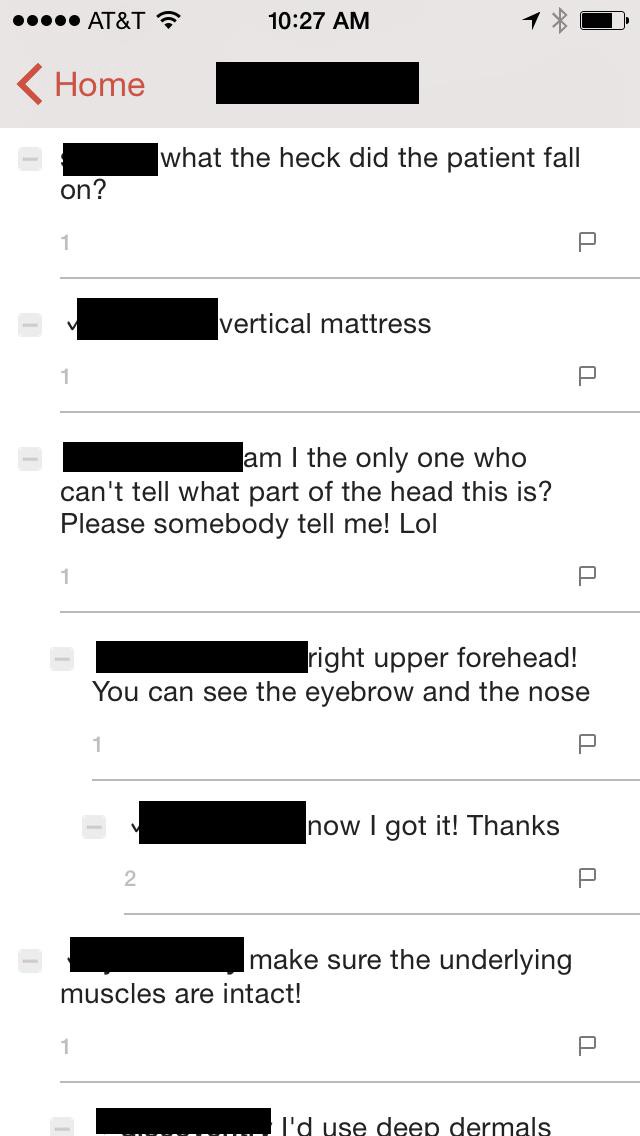
The discussions are inflected with internet-speak — LOLs and ROFLs under funny-looking kidney stones — and the doctors make jokes. This is a genuinely new thing, this weird doctor social network, so the emergence of new styles and tropes is inevitable. An especially popular post type is “guess the diagnosis”:
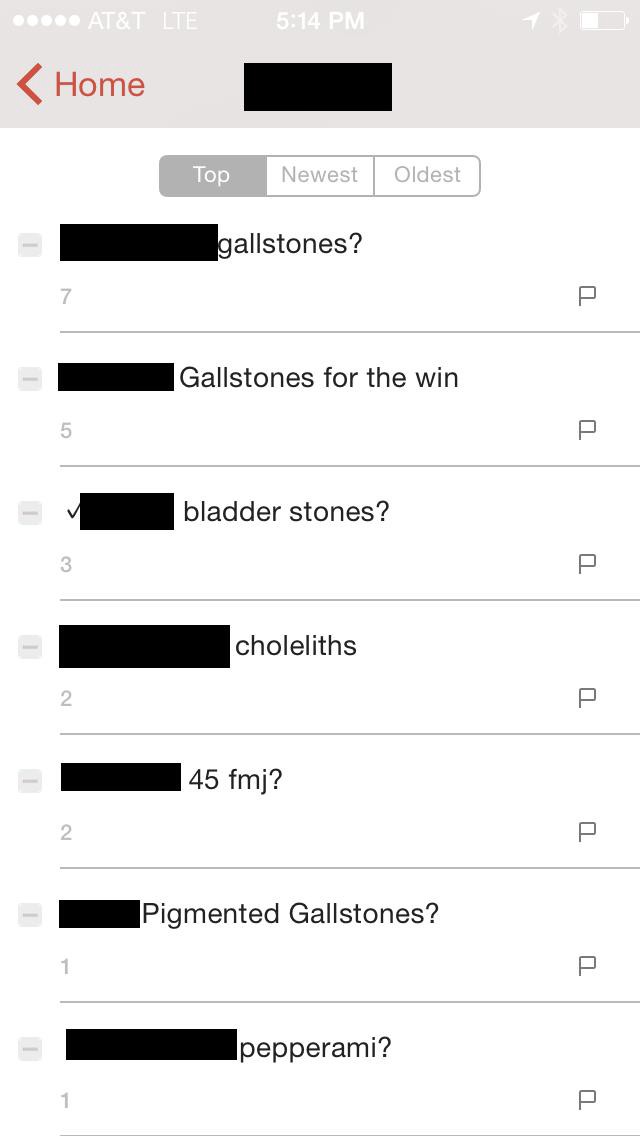
Gallstones for the win.
I’ve redacted all the usernames (and they are usernames, not actual names) out of politeness. I’m also not including any medical imagery because whether or not these patients consented to their photos being posted on Figure 1 I doubt any of them added “and put it on some blog, too” after signing. (It’s also against the Figure 1 terms of service, but whatever.)
But I also wouldn’t take it for granted that patients understand exactly what getting posted on Figure 1 looks like in practice. The tone is jarring. Not cruel, exactly, just sort of unfeeling. Certainly not patient-facing.
It’s how you must have to talk if you’re a professional death-delayer, except with some extra social media flourishes and the visual trappings of an photo of a fancy meal or a sunset. Not only does it confirm what most patients probably would have guessed — that doctors have their own style of shop talk — it makes casual medical speech less ephemeral, and pushes it at least part of the way out into the open. Reading comments in this app is like eavesdropping on a table of doctors in a hospital cafeteria, infinitely. Figure 1’s request that users “avoid saying anything about a patient online that you would not say in front of them” is obviously wishful thinking, and probably just ass-covering. If it’s actually vital to the app’s concept, then the app’s concept is broken:
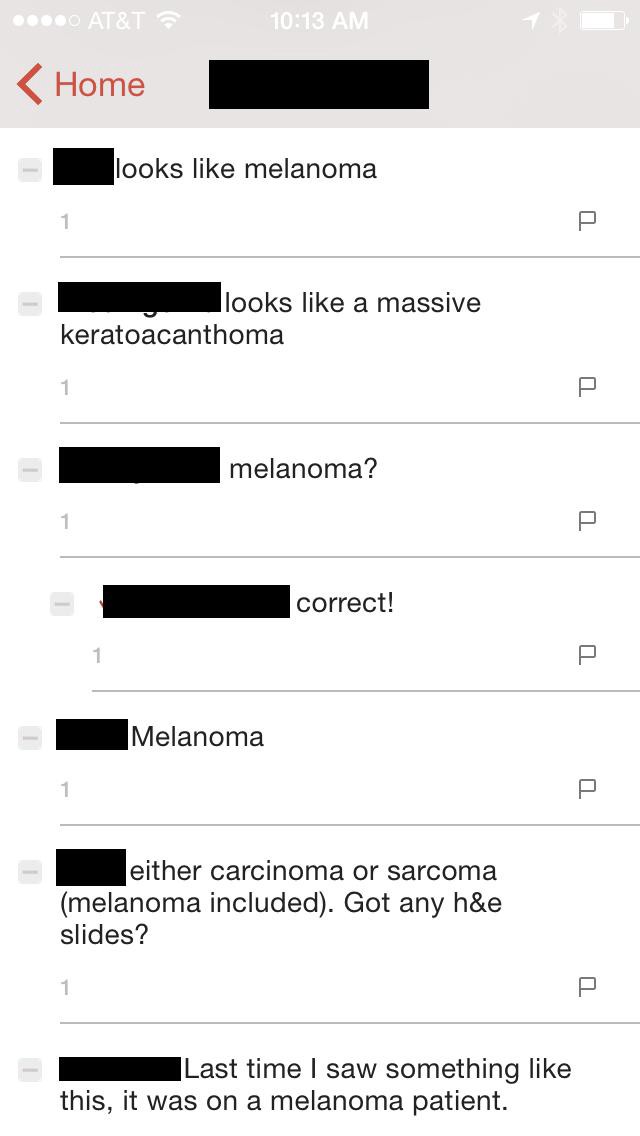
Who is this joke harming? Nobody, probably. But would you like it to be made about your chunk of throat-matter? This would all be theoretical tone-policing if I hadn’t been able to pull up these comments myself, after reading about Figure 1 on a tech blog.
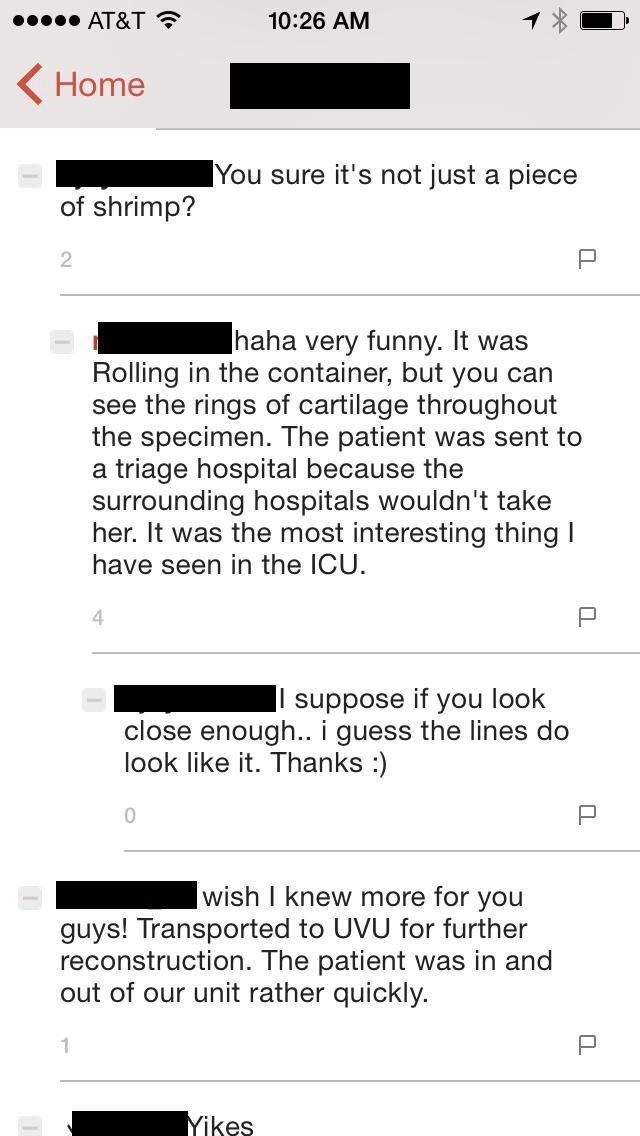
For an idea of what this photo looks like, just know that the first comment is sarcastic.
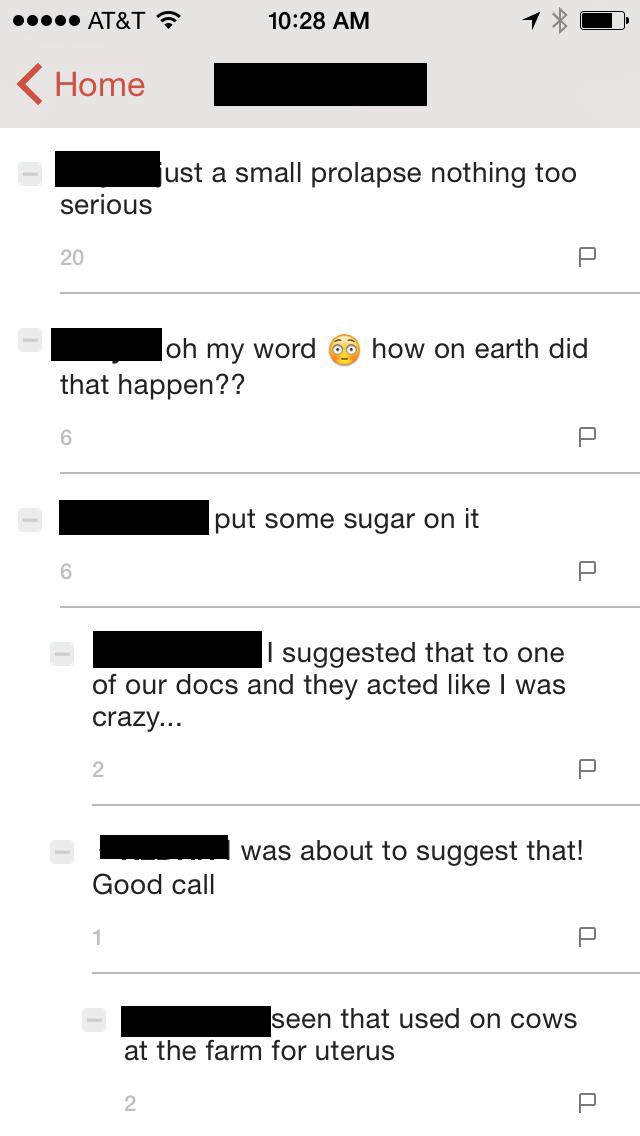
Part II:

There are photos of children.
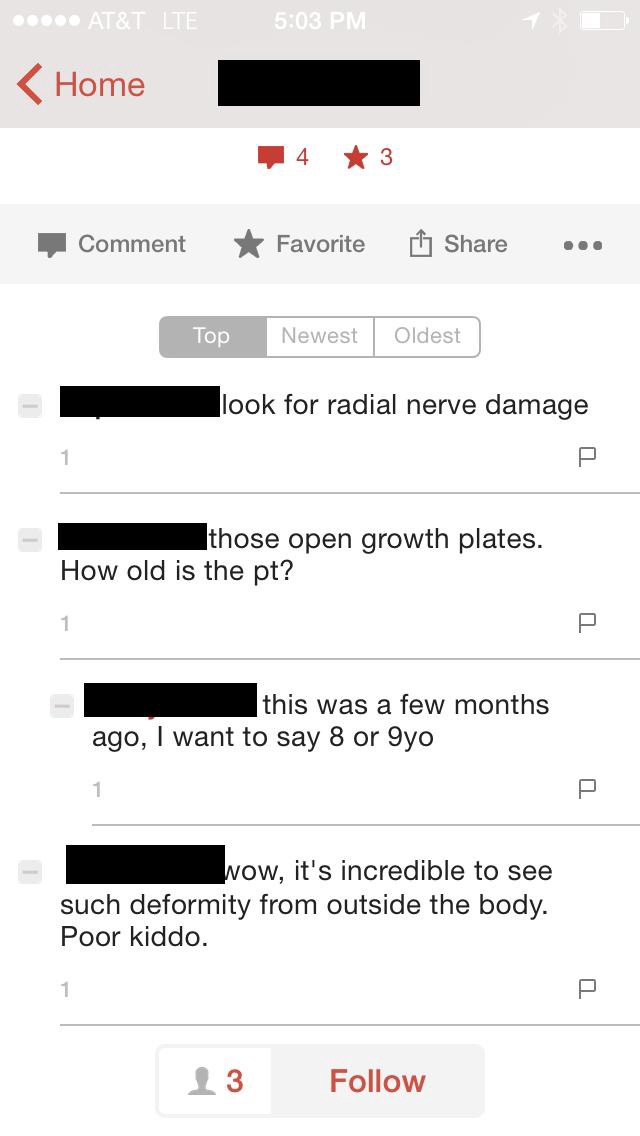
And little inside jokes about out-of-whack test results.
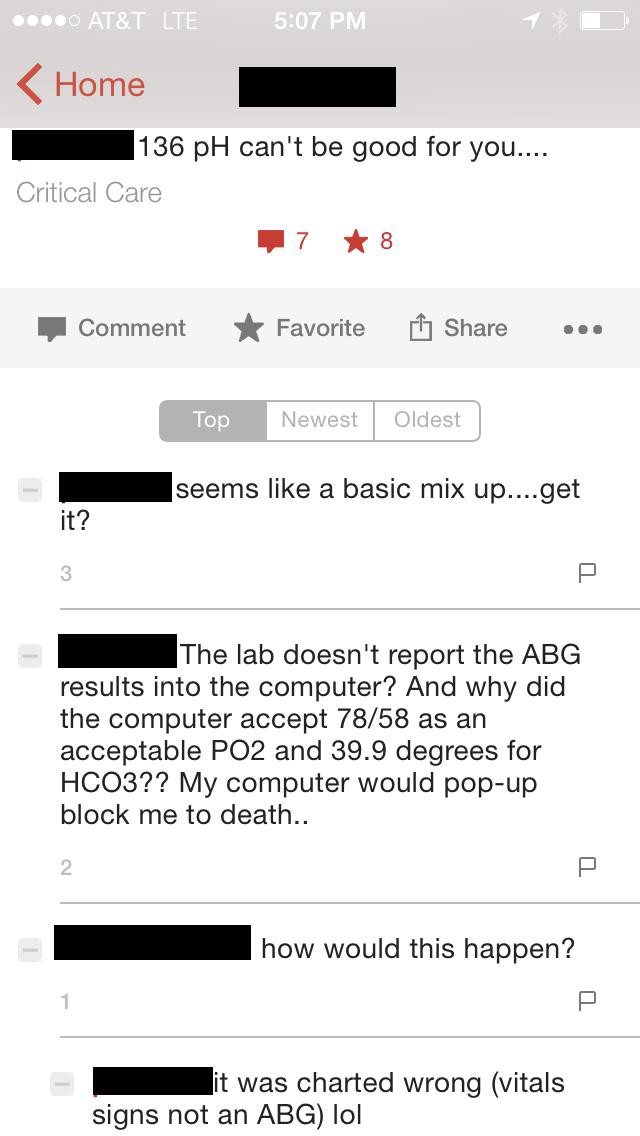
There is pity. Lots of pity.
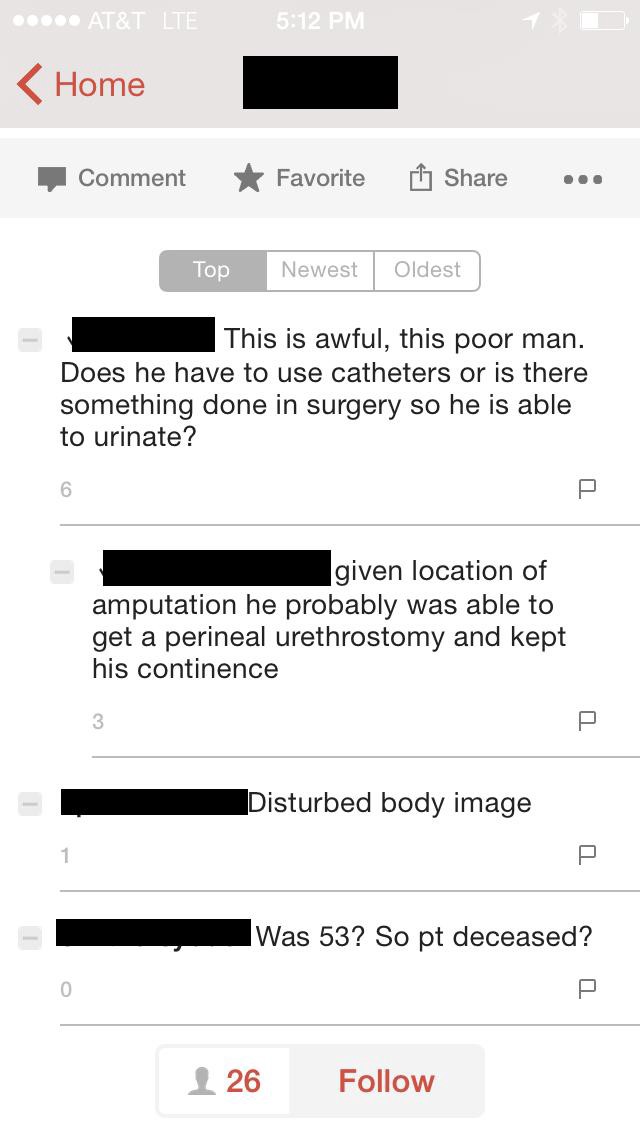
And, with some frequency, jokes. This is a photo of a hand with a nail driven through two fingers.

This is a severely gangrenous foot.

This is a photo of a hand that has been sliced open by a razor.

These doctors, for the most part, do not know each other. This is presumably what makes Figure 1 an appealing tool — it’s a new space in which people are trying to create utility. It’s also what makes it so difficult from a patient perspective. If this is a glimpse of how medicine is made, it might be more comfortable not to know.
H/t @Cwarzel
